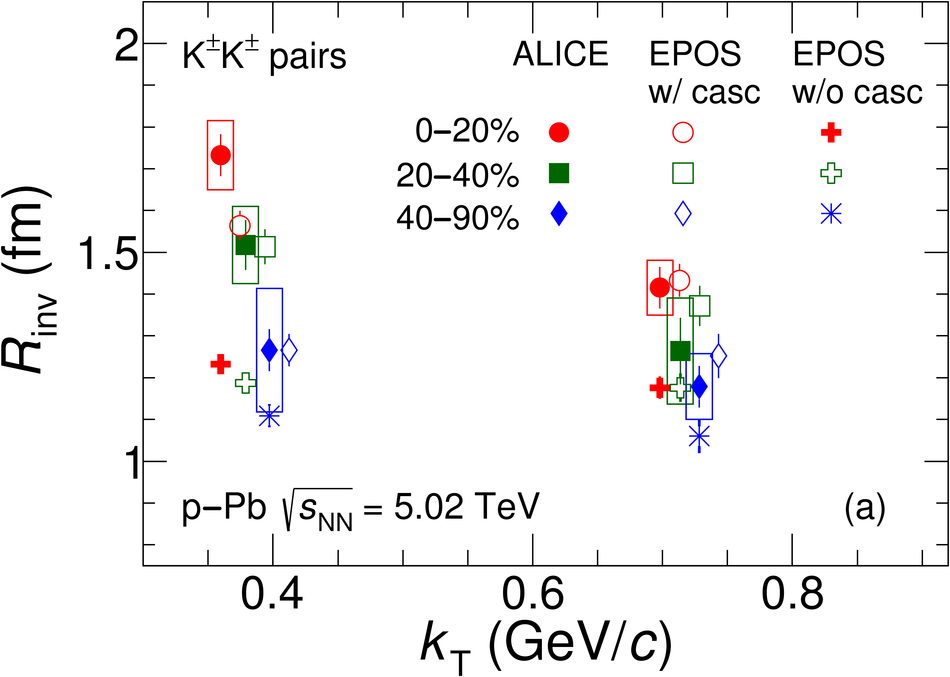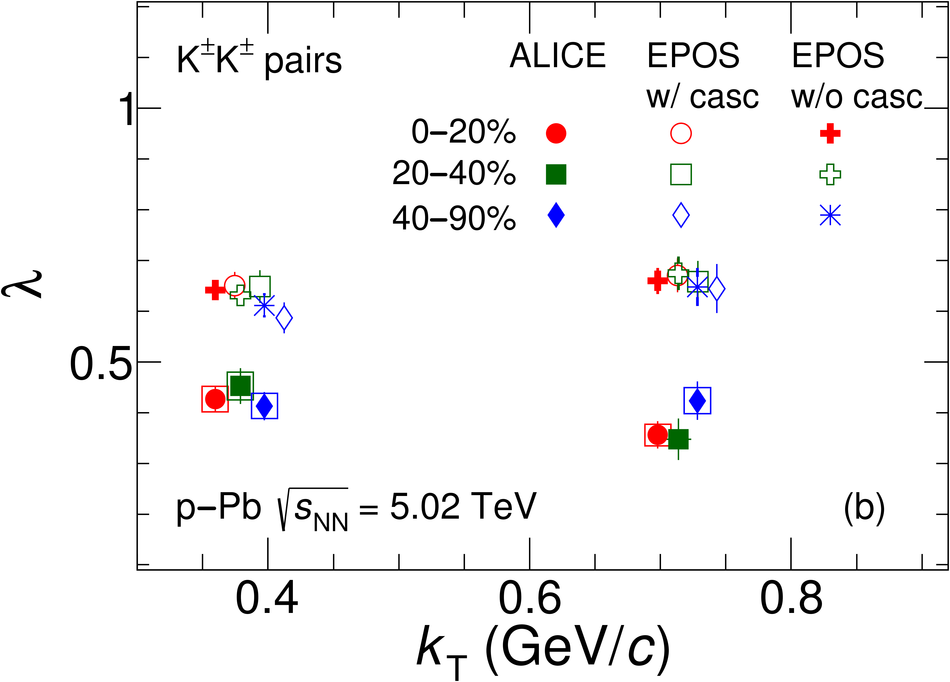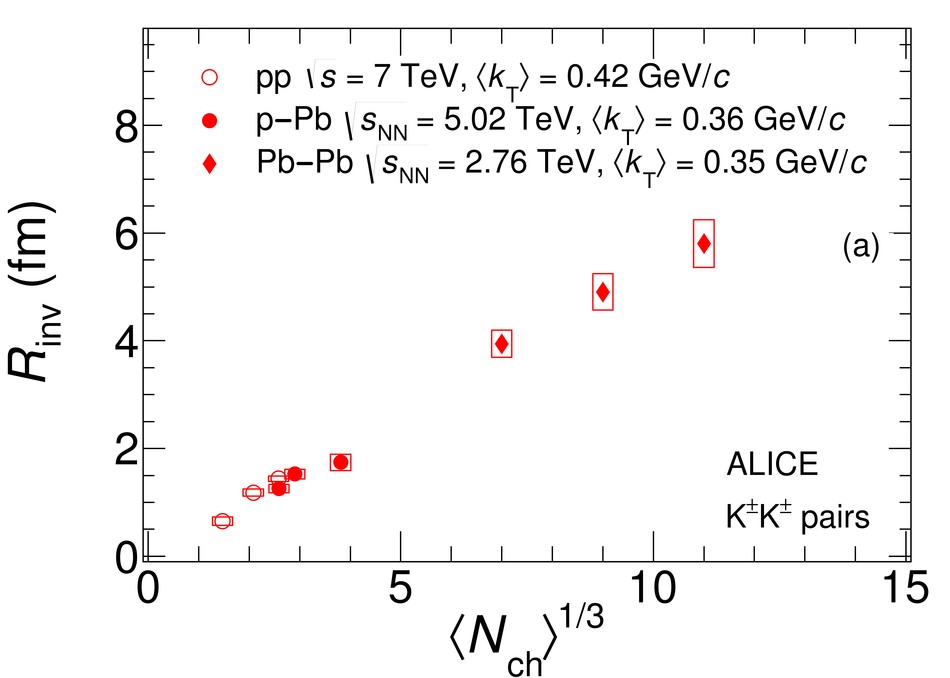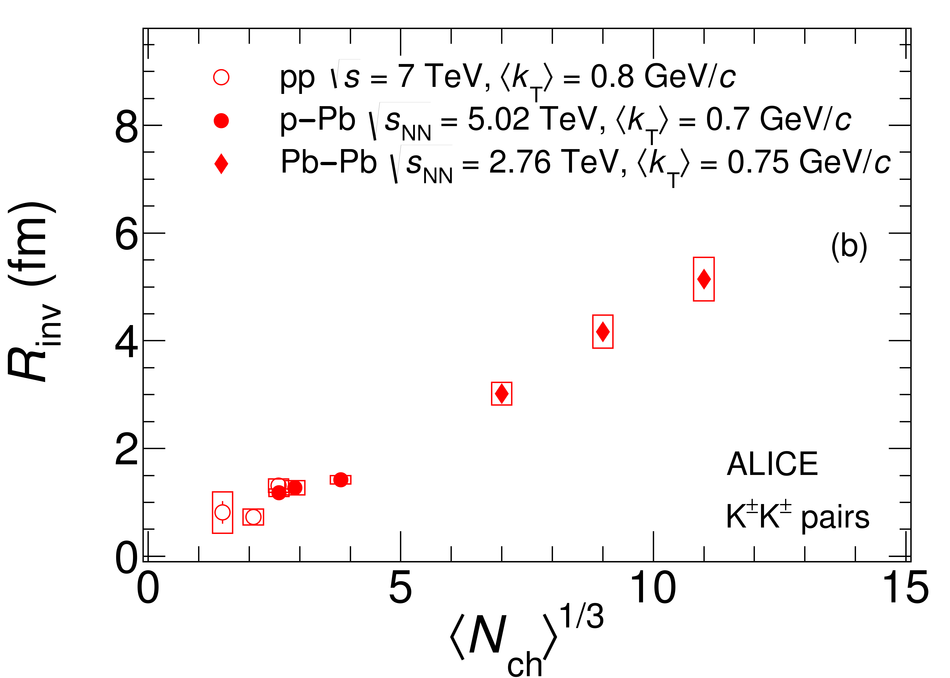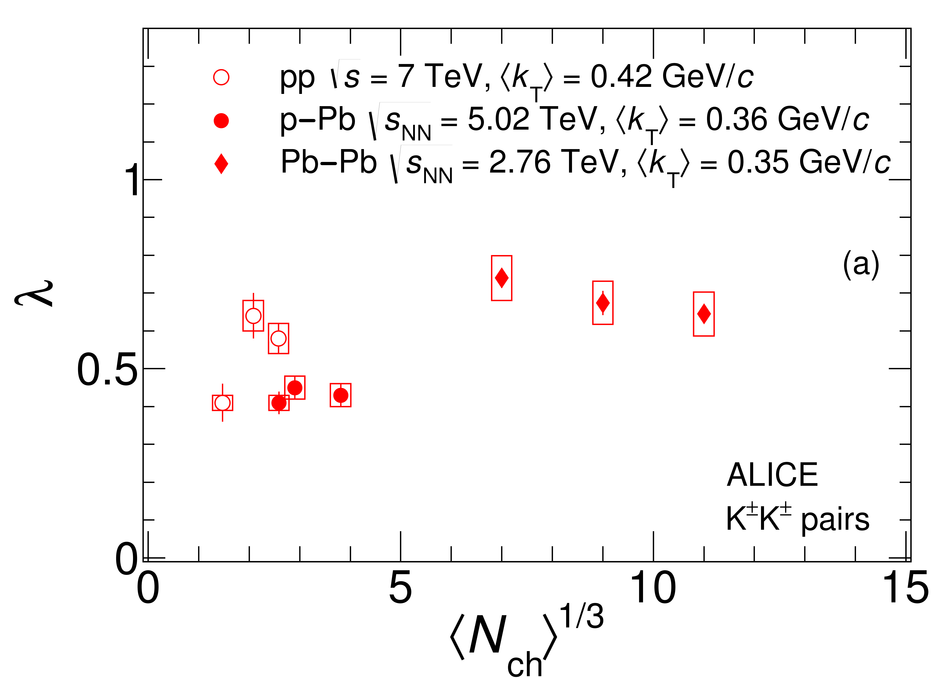The correlations of identical charged kaons were measured in p-Pb collisions at $\sqrt{s_{\rm NN}}=5.02$ TeV by the ALICE experiment at the LHC. The femtoscopic invariant radii and correlation strengths were extracted from one-dimensional kaon correlation functions and were compared with those obtained in pp and Pb-Pb collisions at $\sqrt{s}=7$ TeV and $\sqrt{s_{\rm NN}}=2.76$ TeV, respectively. The presented results also complement the identical-pion femtoscopic data published by the ALICE collaboration. The extracted radii increase with increasing charged-particle multiplicity and decrease with increasing pair transverse momentum. At comparable multiplicities, the radii measured in p-Pb collisions are found to be close to those observed in pp collisions. The obtained femtoscopic parameters are reproduced by the EPOS 3 hadronic interaction model and disfavor models with large initial size or strong collective expansion at low multiplicities.
Phys. Rev. C 100, 024002 (2019)
HEP Data
e-Print: arXiv:1903.12310 | PDF | inSPIRE
CERN-EP-2019-054




